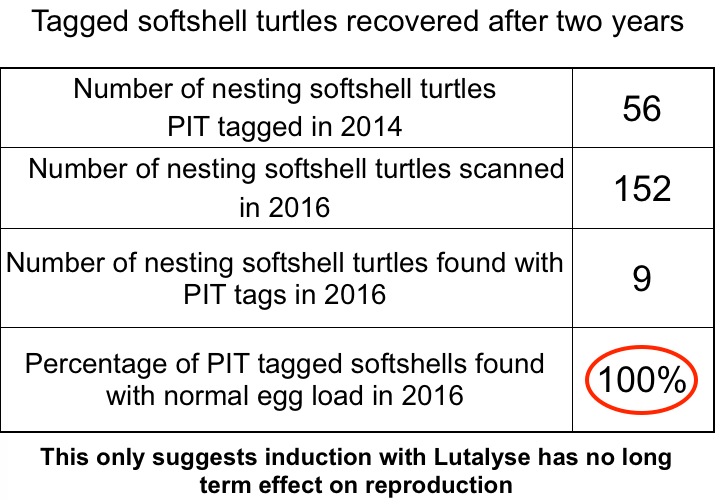Side effects of drugs used with RES and SSS
Oxytocin used on its own has two significant side effects. One side effect is that it interferes with the next ovulation in species that lay multiple clutches. That means there is often only one clutch per season where there might have been three or four. It also causes false nesting; a behavior where the female attempts to nest after a successful oxytocin induction even though she’s carrying no eggs. This is a big danger for wild turtles who must face the threats of automobiles and predators when they emerge from the water to lay their eggs. We addressed both these issues.
We were able to test Lutalyse in several ways to see if it interfered with the following ovulation. One method was to follow up labeled RES on the Concordia Turtle Farm. We applied tree paint to each RES with a code that referred back to the day they were induced. The problem with this method was that the labels deteriorated rapidly. This happened despite each animal’s carapace being washed with water and then with rubbing alcohol before being labeled. After three weeks (the average period between clutches) the label was still easily read but, by six weeks, it had often deteriorated to the point where we were often unable to read it. The photo below illustrates what the labels look like at three weeks. This particular turtle had laid all its eggs with the first induction, ovulated normally, and laid its next clutch using induction also.
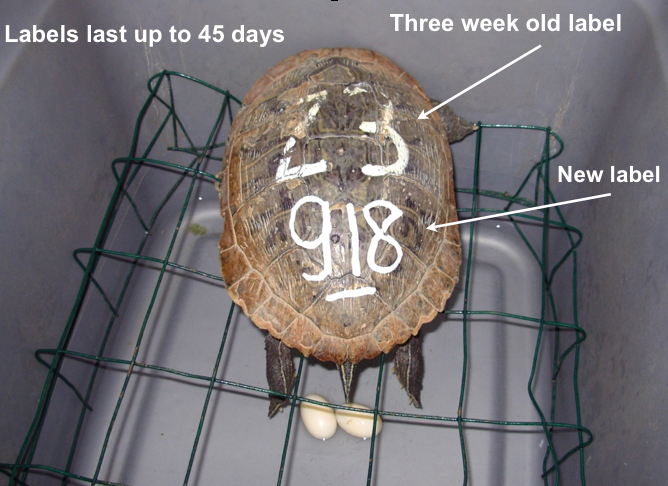
The table below shows the results of our recaptures of induced female RES on the farm. It must be interpreted with care since we probably missed large numbers of labeled RES that were on the nesting areas. Never-the-less, it suggests that false nesting occurs with at least some of the RES induced with only oxytocin while none of the animals that received Lutalyse false nested. The number of RES that were recaptured after about three weeks with a normal clutch was 78%. This suggests that turtles induced with Lutalyse ovulate normally after induction.
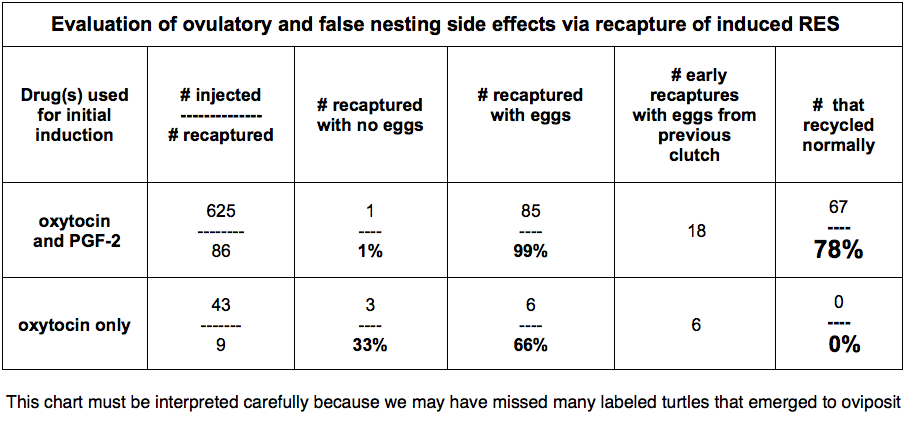
The uncertainties from this table were resolved by long term observation of a closely watched colony of RES at our home in New Zealand. These turtles lived in a series of above ground liner ponds; one of which is illustrated below.
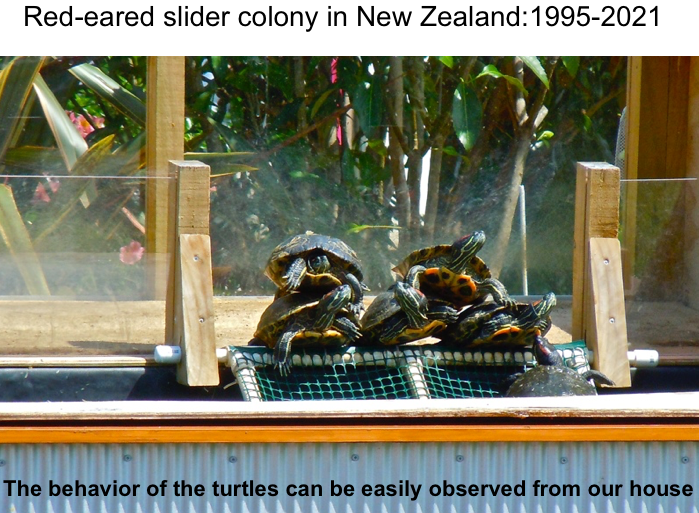
This colony was observed over a period of 24 years. From 1995-2008 we used oxytocin alone to induce the turtles. During those years we rarely got more than one clutch per turtle and false nesting was very common. But after 2008, when we started to add Lutalyse, the problems with false nesting disappeared and the clutch size rose from one per season to three to five. Regardless of the method of induction used there was never any mortality.
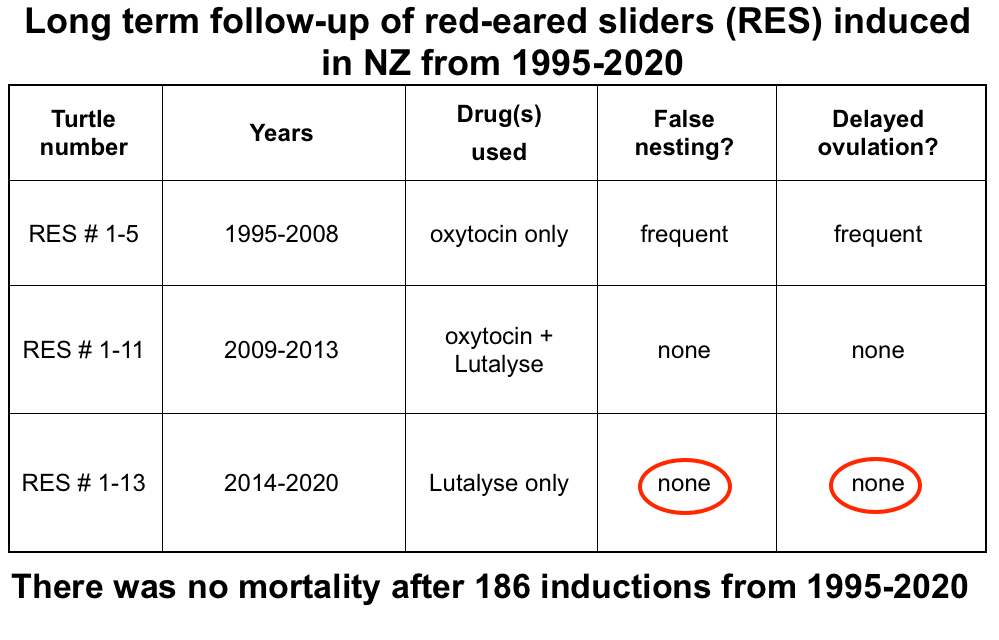
Finally, we evaluated the long term effects of inducing SSS. In 2014 we PIT tagged 56 SSS turtles in a pond that held several hundred SSS. The turtles we tagged had all been induced with xylazine and Lutalyse and had laid 100% of their eggs. Two years later we scanned 152 turtles that we captured and nine of these had been tagged. All of these had a normal complement of eggs as shown below and laid them all when induced with Lutalyse and Sedivet.
